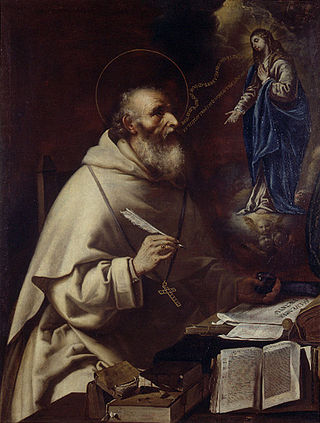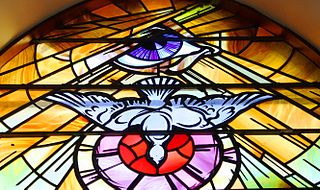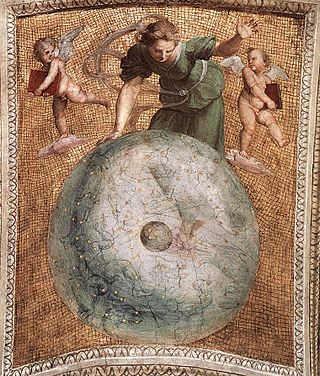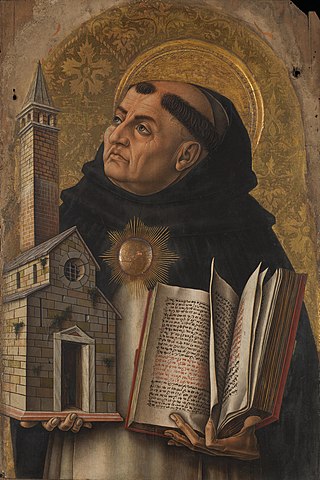| Part of a series on |
| Scholasticism |
|---|
 |
The transcendentals (Latin : transcendentalia, from transcendere "to exceed") are "properties of being", nowadays commonly considered to be truth, unity (oneness), beauty, and goodness.[ citation needed ] The conceptual idea arose from medieval scholasticism, namely Aquinas but originated with Plato, Augustine, and Aristotle in the West. It is believed to be prefigured in the Bhagavadgita, an ancient Hindu classic, which illuminates the doctrines of Yoga. Viewed ontologically, the transcendentals are understood to be what is common to all beings/things/identities, and all things that exist (theologically, metaphysically, normatively) can be judged, or appraised, or may be said to be or possess the innate qualities and characteristics which we consider or deem True (Thought and Logic), Beautiful (Aesthetic and Artistic) and Good (Morals and Action). From a cognitive and "first principles" horizon, going all the way back to Aristotle, they are the "first" concepts, since they cannot be logically or deductively traced back to "a prior metaphysics" preceding their Rational unfoldment and display.
Contents
In the ancient, premodern subjective understanding of Aristotle, the transcendentals operate via man/woman's Reason, or the reasoning subject. Seen as a whole, rather than reducing everything to Truth, the transcendentals are part of a harmonious or complete unity each within its applied domain of Reason, which is within the domain of a possibly higher unity: Soul. Plato's conception may be more intangible but it certainly anticipated Aristotle, and later, Aquinas.
Prior to the Enlightenment Era of human consciousness, these spheres/domains were synonymous with rationality, or dispositions of rationality. Theoretical Reason (what I understand), Practical Reason (what I do), and Aesthetic Reason (what I appreciate) were understood for what they did rather than as mere abstractions.
The True, can be demonstrated empirically within: Mathematics, Science, and Metaphysics. Beauty can be seen empirically within: Aesthetics and Art. The Good, via Practical Reason can be seen empirically within: Ethics and Politics.
Finally, Reason is an underlying generalization in each. Each object-domain makes strides by uniquely generalizing from a particular level to the general concepts, rather than from the generals to any particular.
The transcendentals are, lastly separate, mutually interacting, and potentially coordinated whole domains, are ultimately distinct, cannot be reduced without serious harm to the transcendental in question, and are vast but expansive unto themselves.
Howard Gardner conceptualizes the Good as Goodness a property of relationships, the true as a property of statements, and the beauty as a property of experiences. The Golden rule stabilizes relationships at the local level, but according to Gardner, global relationships (the ethics of roles) consists of citizenship and work. [1] We must be good citizens, good people, and good workers. Citizens and workers collaborate in Commons to share the best ethical practices.
The Beautiful consists of experiences, or tastes concerning the natural world and the Arts. Beautiful experiences are interesting, memorable, and they invite returning. Some tastes seem quite universal, while others are divergent.
The world of truth is ever-evolving, as we seek to overcome postmodern conundrums. However, truth may still be established in this age. Truths generally converge. So Gardner thinks there's hope. Truth and False can be seen by noting the type of truth and the methods that were used to obtain legitimacy preliminary knowledge.
There are two types of truth: Truths emanating out of academic disciplines (history, science), and truths emanating from daily life (professions, trade crafts). Within these fields propositions and statements are the basis for making truth claims. Statements and propositions are either True, False, or Indeterminate. There is no longer a singular truth, but now many truths and meta-cognitive truth. We may never obtain Truth, but our knowledge in these domains points us in a proper direction.
From the time of Albertus Magnus in the High Middle Ages, the transcendentals have been the subject of metaphysics. Although there was disagreement about their number, there was consensus that, in addition to the basic concept of being itself (ens), unity (unum), truth (verum) and goodness (bonum) were part of the transcendental family. [2] Since then, essence (res), otherness (aliquid) and, more recently, beauty (pulchrum) have been added. Today, they are found in theology, particularly in Catholic thought, as unity, truth, goodness and beauty.













